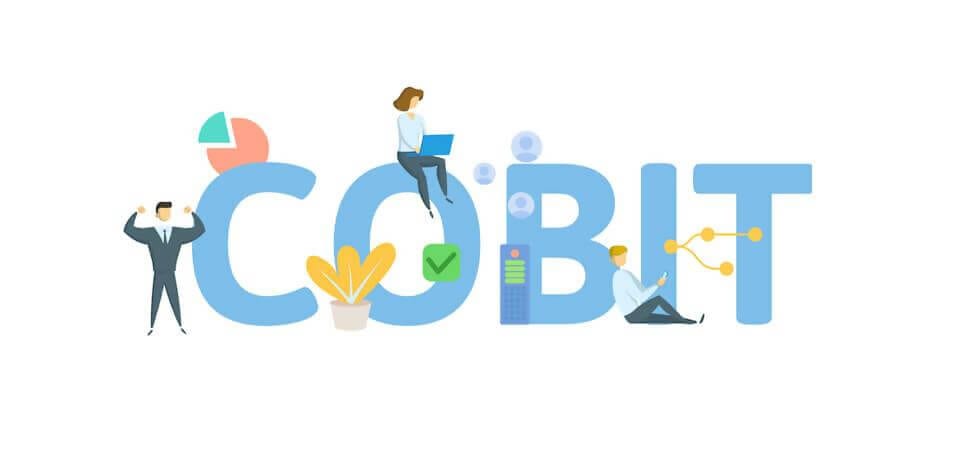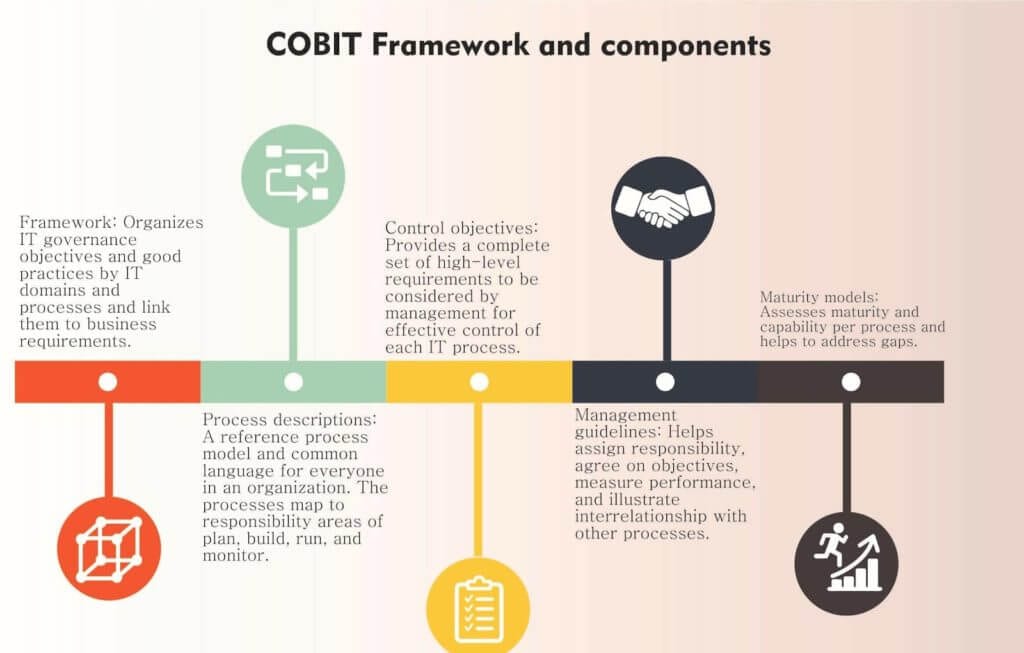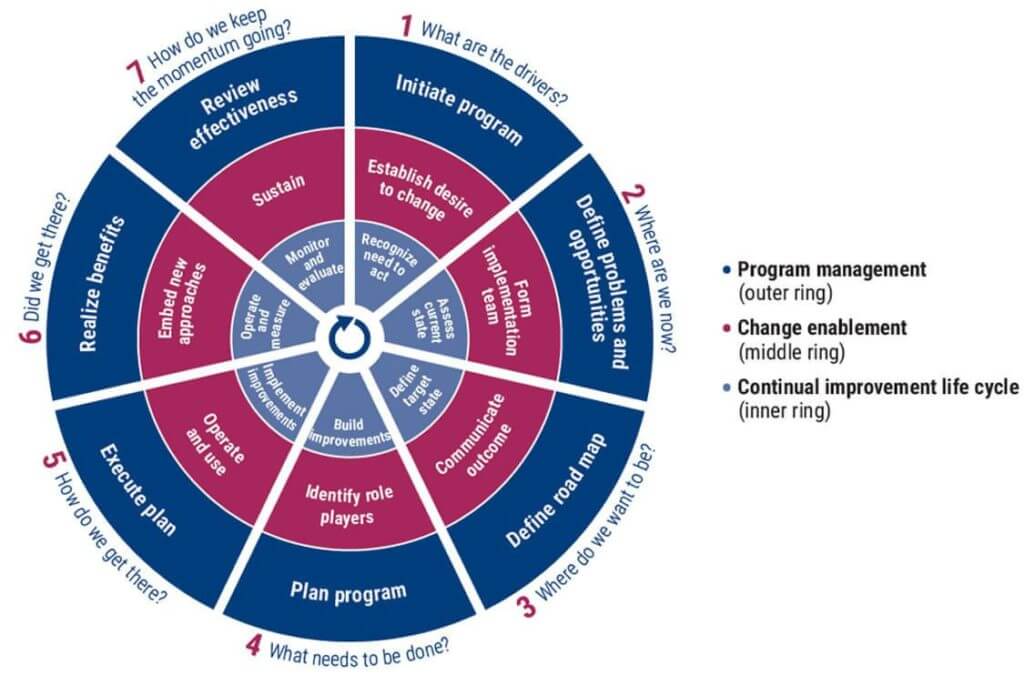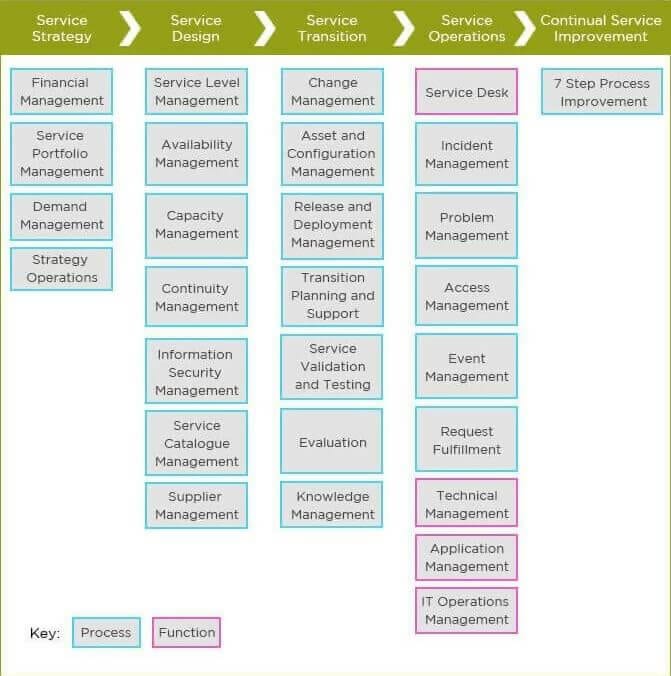If you are concerned about ITSM implementation but unsure about which framework is best between COBIT vs ITIL, we will help you compare these two top IT governance frameworks for the enterprise by diving into the basics and going through their pros and cons. Before that, let’s briefly learn about these two frameworks.
What is COBIT

COBIT, or Control Objectives for Information and Related Technology, is an IT governance framework that aids businesses in developing, managing, and implementing their IT strategies. Introduced in 1996, COBIT comes with the means that enterprises use to manage their governance in an orderly manner and minimize various business risks. It has all the resources needed to create, monitor, and manage its implementation while decreasing costs and establishing privacy standards. COBIT ensures the quality and reliability of information systems, which is important for any organization today.
What is ITIL

ITIL — short for Information Technology Infrastructure Library — is a series of processes aiming at organizing a company’s IT services across the entire lifecycle. Created by AXELOS, ITIL provides a collection of interconnected best practices offering guidance in building, delivering, and organizing enterprise IT services. ITIL helps in mirroring and managing IT configuration components in a centralized knowledge base. With ITIL, the enterprises can organize their IT services and achieve continuously high operational efficiency while reducing costs and improving decision making.
COBIT Basics
The COBIT framework defines a series of management processes for IT where every process is defined with process inputs and outputs, objectives, performance measures, and a fundamental maturity model. It is the only business framework that incorporates a well thought-out approach to organizational governance and offers globally accepted practices and tools to help increase the value extracted from information systems.
Following are the five core components that will help you understand the basics of COBIT thoroughly:

- Framework. The main framework of COBIT guides the enterprises through best practices for IT processes and infrastructure. The objective is to align IT with overall business objectives and help stakeholders understand them better.
- Process Descriptions. COBIT uses an intelligible vocabulary to describe processes, enabling a company to establish a clear communication between employees in the IT and employees in other departments.
- Control Objectives. This component provides an overview of high-level requirements that can help build and improve all IT processes, allowing businesses to adapt them to their own requirements.
- Management Guidelines. COBIT provides best practices for creating objectives, processes, and responsibilities across a company. It also offers guidance on performance measurement and integration with other IT frameworks.
- Maturity Models. COBIT maturity models aid businesses in determining the maturity of their company, understanding process growth, and identifying potential issues that might arise in the future.
To have an in-depth understanding of COBIT, see the following slideshow:
https://www.slideshare.net/ifourkhushbooshah/cobit-62032977
COBIT Implementation
COBIT follows a lifecycle approach that offers a way for organizations to utilize the COBIT framework to tackle the challenges that usually arise during different implementations. There are seven phases of COBIT implementation ensuring that the implementation goes smoothly:

Following are the phases of COBIT Implementation:
- Analyze drivers of change. This phase begins with the analysis and identification of current pain points, risk scenarios, and triggers to enable the transition to a more efficient organization. The main requirement is to recognize the changes required within the organization, root causes, and success factors.
- Determine where the company stands. This phase is focused on determining the implementation scope with the help of COBIT’s mapping of enterprise goals alongside IT-related goals.
- Decide where the company has to be. In this phase, a target is set followed by the comprehensive COBIT analysis that helps recognize the gaps and potential solutions in different phases. Some solutions offer win-win situations while others might be more challenging.
- Identify the factors that need to be improved. This phase involves planning practical solutions by determining projects supported by real-time business cases to bring about changes in the company.
- Formulate plans and visualize them. In this phase, the business plans are formulated according to business objectives and major metrics.
- Evaluate results. This phase involves assessing the outcomes and operations of the business plan implemented to drive the transformation by closely checking the success with expected benefits from the plan.
- Sustaining momentum. In this phase, the whole progress and overall success are reviewed, further requirements for enterprise management are identified, and the need for constant improvement is reinforced.
ITIL Basics
ITIL is the most extensively used IT service management framework that directs an enterprise and its employees to use available IT services to enable the business change and development. The objective is to enhance performance and efficiency and accomplish certain levels of service. Today, it is used for addressing new service management challenges and unlocking the potential of modern technology in the era of cloud transformation.
Watch the video that explains the basics of ITIL framework:
https://www.youtube.com/watch?v=5E5VJw1qQzM&feature=youtu.be
The ITIL framework utilizes major performance indicators to evaluate the IT department’s performance, outline further stages of its development, identify issues, and improve its level of service. Its framework is built around the service lifecycle. ITIL that gives companies a number of time-tested practice models for the provision of quality IT services. The ITIL framework consists of five parts:
- Service Strategy — understanding customer requirements, ensuring continuous improvement of IT operations.
- Service Design – services offered by the IT department that support the enterprise
- Service Transition – moving from the development phase to the operational phase
- Service Operations – ensuring that IT services are delivered according to service level requirements
- Continuous Service Improvement – identifying and implementing the means that help to offer better service
ITIL Diagram (Service Lifecycle)
Here is the ITIL diagram explaining the subcategories of the aforementioned components, classifying them as a process or function:

ITIL Methodologies
The ITIL methodology is closely associated with the concept of IT control, defining access hierarchy, responsibilities, and decision making, as well as high customer satisfaction to help a company accomplish its organizational goals. To better serve its goals, ITIL methodology is divided into two main classes of activity in service management processes:
Service Delivery
The goal is to make the organization’s current services better and focus on the analysis and planning of the responses for future service requirements, including the following:
- Capacity management
- Availability management
- Financial management
- Service continuity management
- Service levels management
Support Services
This class focuses on day-to-day business activities, ensuring that current services are maintained. It includes the following processes:
- Incident management
- Configuration management
- Version management
- Change management
- Service desk
Take a closer look at the ITIL Methodologies with the following slideshow to gain a deeper understanding of the framework:
https://www.slideshare.net/dwslaterjr/introduction-to-itil-slide-share
COBIT vs ITIL Framework Comparison
Both COBIT vs ITIL are popular choices, but there are some major differences between them. Let’s discuss them below.

Pros and Cons of COBIT
Pros:
- Risk Minimization. COBIT is a time-tested framework comes that helps companies to reduce service and infrastructure risks.
- Environment Regulation. The increasing effect of technology on people’s daily lives throughout the world has influenced the role of regulation. The latest version of COBIT framework allows proper compliance and makes it much easier for the company to show that it fulfilled the requirements.
- Size Independence. With the help of its tools and techniques, COBIT principles improve efficiency and effectiveness. It is applicable in every industry and regardless of business size or growth trajectory.
- Efficiency and Productivity. COBIT models and principles are internationally recognized. It helps in addressing stakeholders concerns, defining their roles, achieving strategic goals, and realizing business benefits, thus resulting in enhanced productivity and efficiency in the organization.
- Governance. The key benefit of COBIT is implementing an IT governance standard across the enterprise. It ensures that risks associated with IT are mitigated and effective controls are put in place to ensure that all processes are monitored.
Cons:
- Not easy to Implement. Many organizations avoid implementing COBIT as it needs a lot of skills and knowledge to be used as a tool to offer IT governance support or assess IT department performance in an organization.
- Experienced Analyst Required.The maturity model offers a generic analysis of any given situation; thus, it needs a seasoned analyst to conduct a credible maturity assessment of an IT organization.
- Lack of Specifications for Connections. The framework lacks specifications related to its connections between the benefits of the activity and how it is shown in the featured maturity model.
Limitations and Benefits of ITIL
Benefits:
- Cost Transparency. By creating metric-based strategies, ITIL helps the organization with budgeting and accounting requirements. The processes established by the ITIL framework allow companies to closely check the costs based on detailed metrics and make difficult cost-cutting decisions.
- Better Risk Management. If an enterprise uses ITIL for cost optimization, there is still a need to account for risk factors. Risk management activities come in multiple processes which should be carried out to identify, prioritize, and organize service improvements.
- Aligns Business and IT. While ITIL does not help create business strategies, it supports them. ITIL is compatible with business goals and helps to run an IT department as if it is a service provider. It makes IT operations a major part of the business.
- Improved Quality of Service. ITIL implementation gives an enterprise every possible damage control measure. It enables employees to understand what should be done and keeps track of every procedure that should be followed. This ultimately improves the quality of service offered by the organization.
- Frameworks Integration. ITIL can be smoothly integrated with third-party project management systems to optimize different workflows and improve coordination between different departments.
Limitations:
- Extensive Training Required. Implementation of ITIL is a lengthy process that requires extensive training across departments.
- Disrupts the Current State of Enterprise. Though ITIL has a number of processes for risk management, the imposing of changes on the enterprise can be disruptive.
- Expensive. Implementing ITIL is costly on every level.
For the head-to-head ITIL vs COBIT comparison, watch the following video:
https://www.youtube.com/watch?v=WwoN3YCgL_k&feature=youtu.be
ITIL vs COBIT: Which To Choose?
When it comes to ITIL vs COBIT, it is clear that both of these frameworks focus on a single objective: to make IT efficient and stable. Both frameworks have a long list of pros and a number of substantial benefits. If you are confused when it comes to making a choice between COBIT and ITIL, consider going with ITIL in the primary stage of your ITSM implementation. Meanwhile, COBIT is the best choice for large, established enterprises.